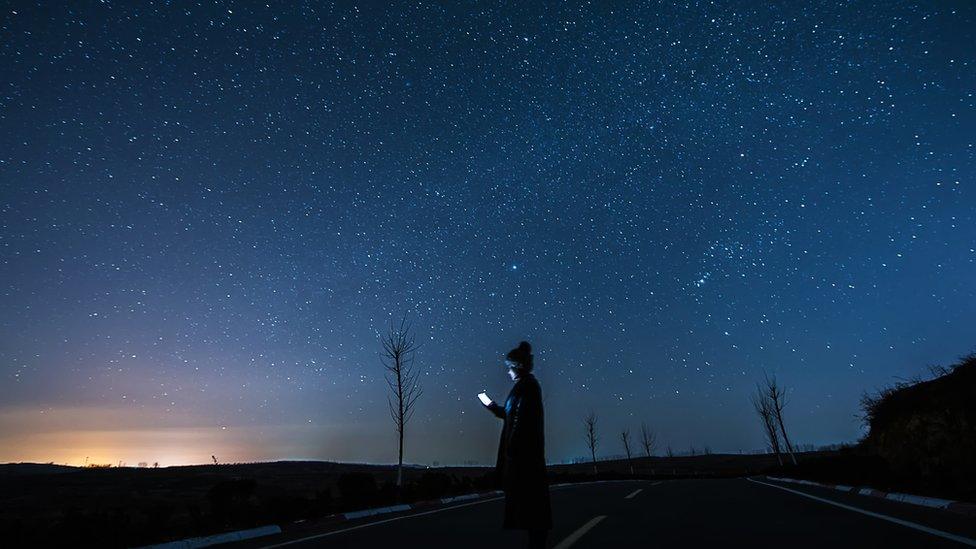Stars: Light pollution is drowning out the stars, say scientists
- Published
- comments

The city lights may look pretty, but scientists say this "skyglow" is drowning out the stars.
The number of stars people can see in the night sky has reduced dramatically over the past 10 years, new research has found.
According to the study the brightness of the night sky around built-up areas from light pollution known as "skyglow", has increased by about 10 per cent every year since 2011.
That means, scientists say, if someone can see 250 stars from a particular location, they'll see fewer than 100 if they stand on the same spot 18 years later.
The discovery, which is published in the journal Science, is the result of 12 years of amateur astronomers and citizen scientists going out at night to count the stars.
One of the researchers Dr Christopher Kyba, a scientist from the German Research Centre for Geosciences in Potsdam, told the 成人快手: "Our view of the stars is disappearing".
Light pollution does not just mean being able to see fewer stars, there have also been studies which show it can affect our sleep, health and the environment.
Studies have found it can affect nocturnal animals that come out at night, crop pollination and even the seasons.
The lights of the city are drowning out the stars
Many cities and towns have switched to streetlights with LED lighting which can be directed downwards instead of lighting up the whole area.
But the researchers say LED lighting could also have increased light pollution because it is cheaper and has been used for more outdoor lighting and places which weren't lit up before.
